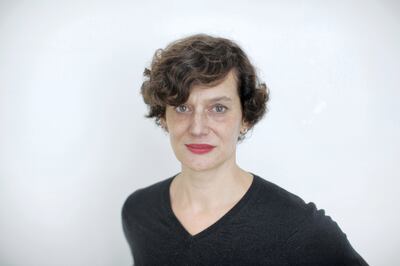Louvre Abu Dhabi announced details of its next exhibition, which will look eastwards towards the Islamic worlds of Central Asia and along the trade routes to China.
Dragon and Phoenix – Centuries of Exchange between Chinese and Islamic Worlds is organised with the Musee national des arts asiatiques – Guimet, popularly known as the Musee Guimet, in Paris. The collaboration forms part of the founding agreement between French museums and Louvre Abu Dhabi, which brings a series of exhibitions drawing from the 17 major museums in France to the UAE institution.

The show takes in the rich and layered histories that lie between the Arabian Gulf and East Asia, via the empires, economic trade and religious exchange that took place between the 8th and 18th century.
This varied territory stretches from the Arab merchant communities in South-East Asia, and further down the coast of the South China Sea, to the Central Asian aesthetics that developed along the so-called Silk Road, both a maritime and land route. Luxury items – golden cups, silk cloths, pottery and chinaware – and art forms such as drawings, calligraphy and ink paintings are ongoing proof of the cultural exchange in and among the regions.
“The exhibition reinforces the role of Louvre Abu Dhabi in highlighting transcultural relationships as well as the need to adopt novel approaches in the field of historical research,” said Souraya Noujaim, scientific, curatorial and collections management director at Louvre Abu Dhabi.
Noujaim supported Sophie Makariou, the president of the Musee Guimet, in curating the exhibition, alongside Guilhem Andre, also from Louvre Abu Dhabi. "For nearly a thousand years – from the 8th century to the threshold of the 18th century – these two cultures were entwined through trade, scientific curiosity, and artistic production.
"Each observed and inspired the other. Our story of mutual influence and inspiration ends deliberately at the cusp of the 18th century, when alternative models with a radically new aesthetic appeared.”

One clear example of East-West exchange is in ceramics. In the 13th and 14th century, cobalt was imported to China from Central Asia, furnishing the blue pottery still referred to as china in English. The exhibition shows how this exchange of resources was embellished by aesthetic influence, as ceramic-makers in China incorporated Islamic motifs – no doubt inspired artistically, but also in order to meet the demand of Iranian and Islamic buyers further West.
Cultural exchange was also borne on the back of invasion and empire, such as in the Mongol raids and the ensuing Pax Mongolica of the same 13th and 14th century period. Gold-threaded silk fabric known as Tatar cloths show how the Mongols incorporated techniques and styles from Iran and Central Asia.
Traditional art forms, too, crisscrossed now-national boundaries, and in a quintessential Louvre Abu Dhabi exploration of cultural synergies, the exhibition will showcase the connections between Chinese calligraphy, in paintings from the 15th to 17th centuries from the Musee Guimet, by artists such as Wen Zhengming, Dong Qichang and Zha Shibiao, and Arabic crafting of the Quran.
The museum will develop a cultural programme, to be announced, alongside the exhibition. It will take place both in person at the Saadiyat Island site and online.
Dragon and Phoenix – Centuries of Exchange between Chinese and Islamic Worlds will run from October 6 until February 12, 2022






